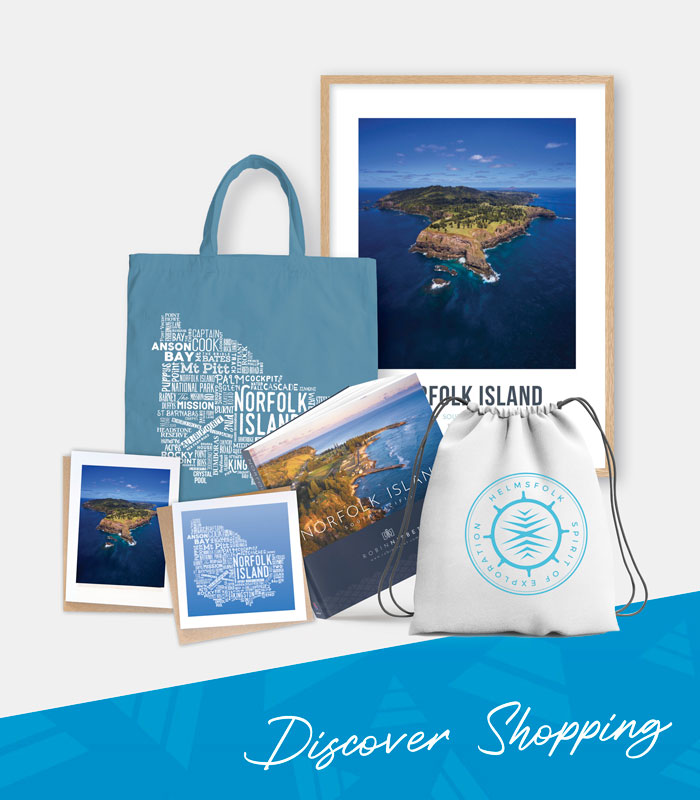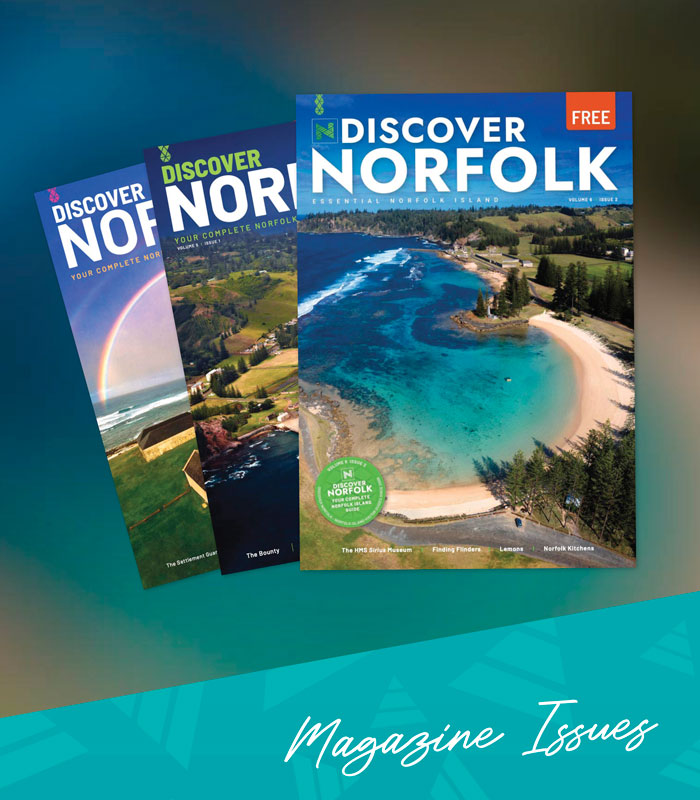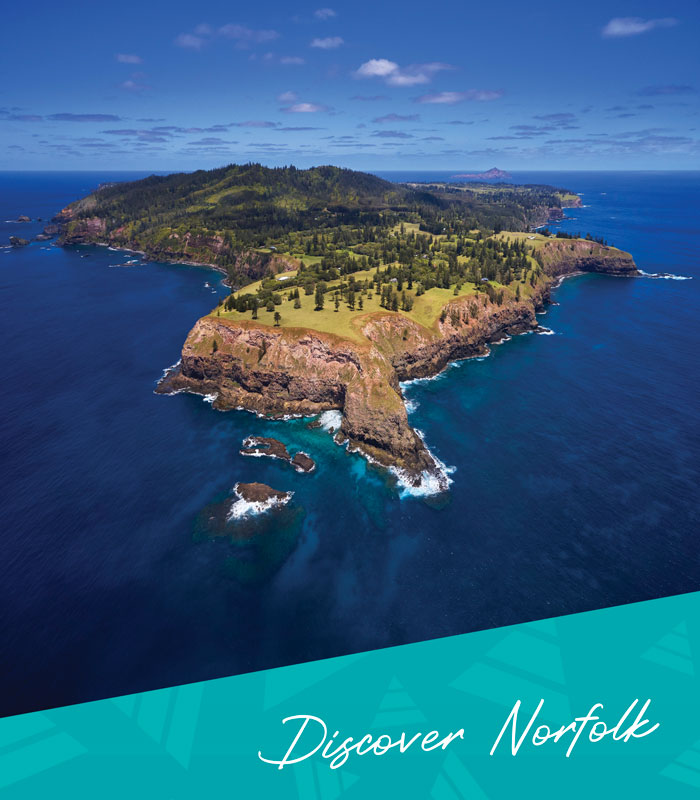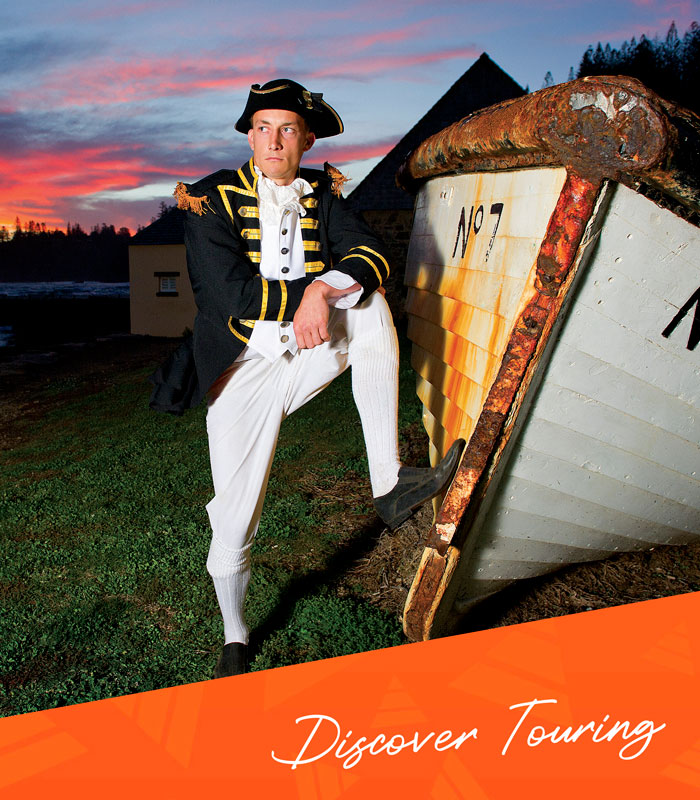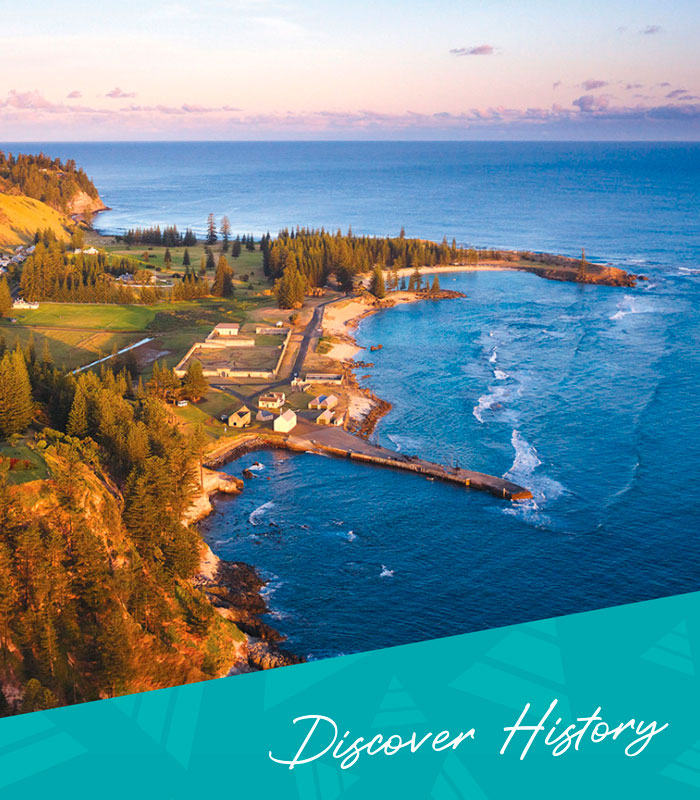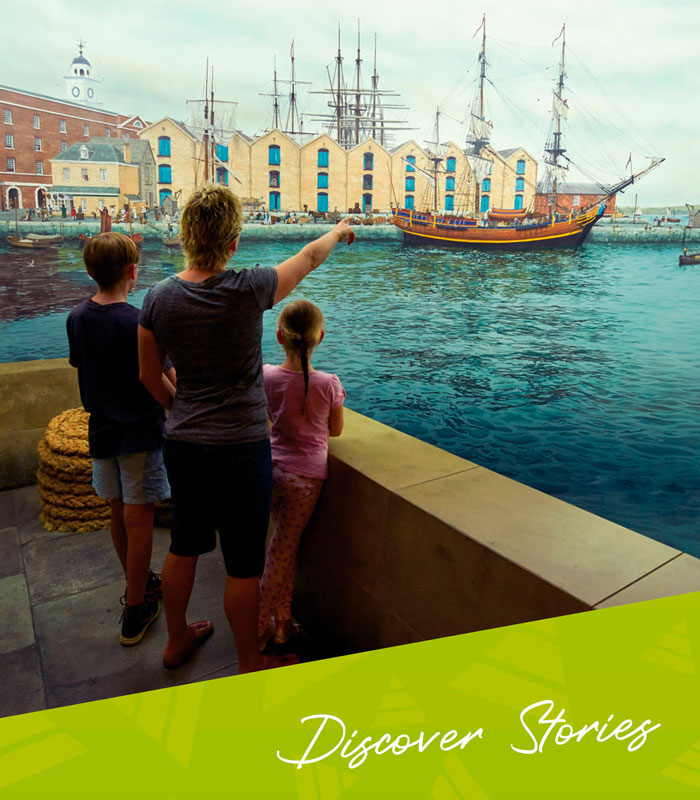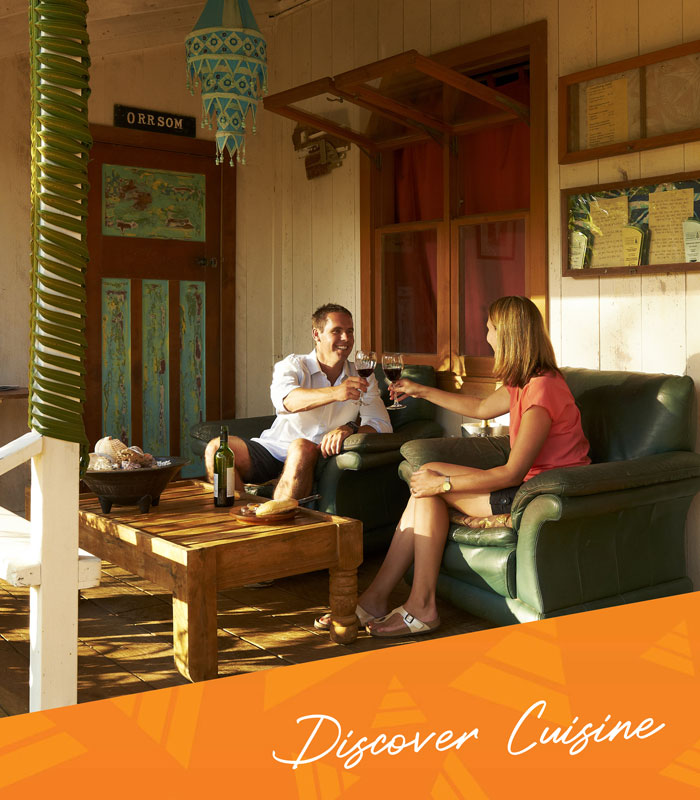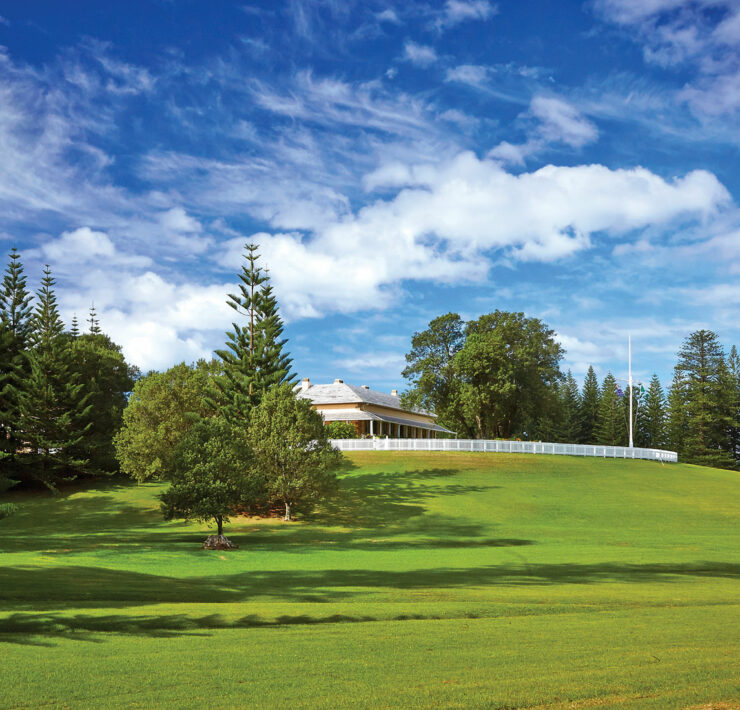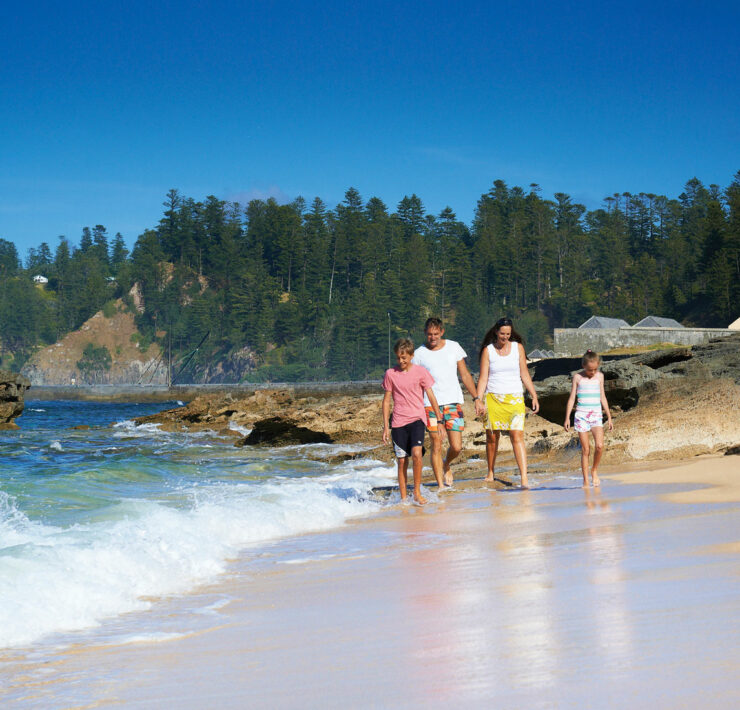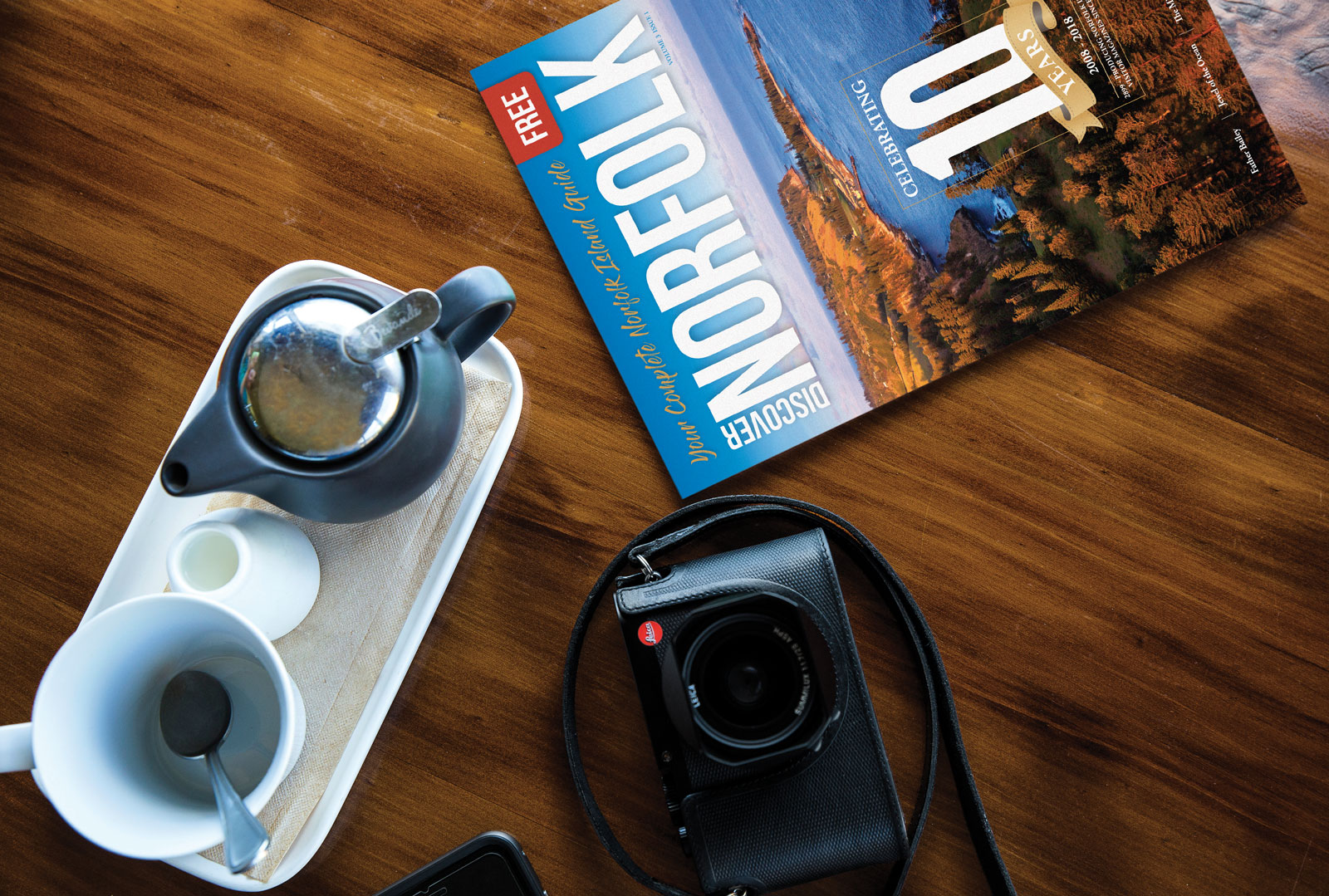Home » All Articles » The Norfolk Kitchen: Sweet wetls for Norfolk tables
The Norfolk Kitchen: Sweet wetls for Norfolk tables

Many years ago, I was invited to a special meal at an island home, where I helped our hostess to husk sweet corn from a sackful she had been given. As the pile of cobs grew higher, I asked how we would know when we had prepared a sufficient quantity. Her reply was, “You wait until it looks like too much, then you know it is enough!”. On Norfolk Island, you will soon discover that wetls (food), usually in plentiful quantities, is very important to any occasion or celebration. In the Norfolk language there are a number of phrases to express the fact that you have eaten well. You may say, “Ai se musa bas” (I am full to bursting point) or “Ai se baalful” (my belly is full). On the other hand, if your appetite has not been satisfied, and your host was a little stingy, you may say “Ai se snel” – but that does not often happen here.
Since the time the Pitcairners first arrived on Norfolk Island in 1856, there have been a number of influences on the way foods are obtained, prepared and eaten. The Tahitian foremothers of the Bounty families had introduced their own strong culinary traditions and adapted them to what was available in their new home. The newly arrived settlers on Norfolk were basically accustomed to a Pacific Island diet of mainly fruit and vegetables, starchy foods such as corn, arrowroot, yams and taro, with fish being the main source of protein. Now they had to become accustomed to new foods that were produced in a slightly cooler climate. Livestock that remained on the island after the closure of the second settlement, meant that beef and lamb became an available food source. Additionally, the colonial authorities sent a flour miller, James Dawe, to teach the people to grind wheat into flour – but the settlers had little enthusiasm for his endeavours, and he left. The Norfolkers preferred their traditional Pilhis, Annas and Mudda, made from bananas and root vegetables. It would be some years before bread from wheat flour would become a staple part of their diet.
The new Norfolk Islanders also brought with them their preference for cooking on an outside fire or oven. Their first homes in Kingston, inherited from the colonial convict period, had kitchens separated from the main house, and many adopted this style when they began to build their own houses. One very important piece of kitchen equipment brought from Pitcairn Island was the yollo, a slab of volcanic rock with criss cross grooves, used to grate green bananas and root vegetables to make a type of cake, which was wrapped in banana leaves and baked in the oven.
The period of the Melanesian Mission brought some changes. Although the Islanders had a strong spirit of hospitality, the Mission staff introduced them to the use of food for entertaining and social interaction, in the form of teas and suppers and the like.
It was during this period, in the latter part of the 19th century, that American whalers began to call in, often leaving their wives on Norfolk Island for the whaling season. One can only imagine the busy exchanges of ideas that began to take place between the ladies in the Norfolk kitchens. It was at this time that the Norfolk women learned to bake American style custard pies, adapting the recipes to use local ingredients. Lemon, coconut and passionfruit pies continue to make an appearance at almost every important island occasion. Around fifty years ago the Norfolk Island Cookery Book first appeared. This modest little publication was intended as a fundraiser for the Sunshine Club, which gave assistance to senior citizens. The book proved to be extremely popular with visitors, and resulted in an increased awareness that the foods and cooking styles of the Norfolkers were an important part of their cultural identity. It was around this time that sisters Val and Kit Nobbs began opening their gracious family home ‘Moira’ to visitors for the experience of an ‘island dinner’, featuring much-loved local dishes and ingredients. The cooks of the island realised they could take special pride in their traditional dishes and recipes, and make use of them to enhance the tourist experience.
The Sunshine Club cookbook, still in print to this day, is not arranged according to courses and occasions, but to the basic ingredients. There are sections for specific food items such as lemons, avocadoes, guavas, and kumeras: an acknowledgement of the fact that recipes and menus are based on what is currently at hand or seasonally available. In the cookbook, there are many recipes just for plun (banana) – ripe bananas, green bananas, and overripe bananas – in order to make good use of them while they are available. Even within a season, produce may be affected by adverse weather conditions, such as a dry period, or excessive humidity, and there are times when an everyday item such as a tomato or a lettuce becomes a luxury!
As well as the seasonal rhythms, attention is paid to milestones in the calendar year. A pig is fattened so that it is ready for a special wedding or birthday; corn is planted so that it is ripe at Thanksgiving in November; special fishing expeditions will be undertaken to provide fish for a community event or a fundraiser, and every effort is made to ensure that the first melons of the season can be harvested to enjoy for Christmas.
It was a constant challenge for earlier generations to preserve food so that it was edible and available for a longer period. Most old homes had a ‘food safe’, a cupboard or free standing dresser, with sides of gauze wire. These were located on a cool verandah or set into an outside wall, and kept dairy products and cooked foods safe to eat for a longer period, as well as giving protection from insects.
“I remember the days,” says one of Norfolk’s senior citizens “when my mother sent me up to Middlegate with a sugar bag each week to collect our meat ration. You took what you were given, and it was very fresh! But we had to cook it straight away to ensure it stayed good to eat.” Their family later bought an ice chest, which meant an additional journey to the Butter Factory to carry home blocks of ice. Folk had to learn to conserve eggs, to tide them over the periods when their hens were ‘off the lay’, and to bottle fruits and vegetables in a variety of ways. Norfolk’s best known preserve would be Porpeih (guava) Jelly. Guavas grow wild and abundantly in many parts of the island, and when they are in season families still go out armed with buckets to gather them. Many a Norfolk pantry is lined with jars of the beautiful clear ruby-red jelly, ready to gift to a delighted visitor. As well as collecting guavas Norfolkers also forage for mushrooms, and wild bush lemons. A little lemon juice certainly helps the guava jelly to set, as well as being used for the island’s famous lemon pies.
‘Rumma’ is a traditional island activity which involves going down to the shore from dusk to find hihis (periwinkles), and to spear crabs in the rock pools. They are taken home, plunged for a brief time in boiling water, plucked from their shells and eaten with fresh bread and butter.
Norfolk cooks have always been skilled at improvising and substituting in order to feed their families. Avocadoes, introduced in the 1930’s, became known as ‘poor man’s butter’, and a pot of dried brown beans, simmering away on the fuel stove all day, was called ‘Cascade meat’. When green vegetables were in short supply, pumpkin vine leaves, kumera shoots, or watercress from the creek kept the diet healthy.
Today’s Islanders enjoy a far greater variety of foods than their forebears did. Even though the supermarket often runs out of items when the ship is delayed, we are still comparatively spoiled for choice. Nevertheless, there is some nostalgia for the old days when the diet may have been more monotonous, but there was the satisfaction of being able to meet your needs from your own garden and property.
“We children did become bored with eating ‘sweet tatie’ (kumera) meal after meal,” an elderly islander explains, “but there was always plenty of food on the table, and we always had enough to share. If we wanted a treat, Mum would take us all down to Kingston in the buggy to catch some fish for our supper. A chicken dinner was a rare treat, and involved catching, killing, plucking and cleaning the chook! Then we had to cook it for ages to make it tender!”
Older folk recall the pleasures of having your own ‘house cow’, and skimming off the thick cream each day. Not only could this be churned into butter, but was used as a gravy on meats, or as a salad dressing, and was added to puddings and porridge. Families and friends would gather for a shared Sunday lunch after church. A picnic would be organised at the drop of a hat, to entertain a special visitor, or simply for a change of routine. Such activities continue to this day, although they are more likely to take the form of a barbecue or perhaps a fish fry. The traditional island picnic still survives – on a rather grand scale – as the central part of the Anniversary (Bounty) Day celebrations. Island families, together with friends and invited visitors, join for a shared feast based on local and traditional dishes.
Fifty years ago, LP gas and electricity began to make things much more convenient in the Norfolk kitchen. Imported groceries have provided greater variety to the diet. Yet, there are still households enjoying a degree of self-sufficiency and there is a renewed appreciation of the value of shaping the menu around what is local and seasonal. The Pacific Islanders living on Norfolk today have contributed to the rediscovery of fibre-rich vegetables such as cassava, taro and yams that our forebears enjoyed.
Cooking on Norfolk Island has always been a cultural and communal activity, where culinary traditions help to tell the islander’s story. The provision of food is very much an expression of the Norfolker’s love for family, community, and pride in their heritage.
____
Image Credit: Robin Nisbet
www.robinnisbet.com
____
Article content disclaimer: Article first published in YourWorld, Volume 03 Issue 01, 2013. Please note that details of specific travel, accommodation and touring options may be outdated. References to people, places and businesses, including operating days and times may be have changed. References to Government structure and Government businesses/entities may no longer be applicable. Please check directly with businesses and/or Government websites directly rather than relying on any information contained in this article before you make travel arrangements.


